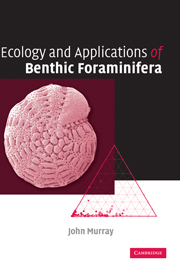Book contents
- Frontmatter
- Contents
- Preface
- 1 Introduction
- 2 Methods
- 3 Aspects of biology and basic ecology
- 4 Marginal marine environments
- 5 Shelf seas
- 6 Carbonate environments
- 7 Deep sea
- 8 Summary of living distributions
- 9 Taphonomic processes: formation of dead and fossil assemblages
- 10 Applications
- Glossary
- Appendix
- References
- Taxonomic Index
- General Index
2 - Methods
Published online by Cambridge University Press: 12 August 2009
- Frontmatter
- Contents
- Preface
- 1 Introduction
- 2 Methods
- 3 Aspects of biology and basic ecology
- 4 Marginal marine environments
- 5 Shelf seas
- 6 Carbonate environments
- 7 Deep sea
- 8 Summary of living distributions
- 9 Taphonomic processes: formation of dead and fossil assemblages
- 10 Applications
- Glossary
- Appendix
- References
- Taxonomic Index
- General Index
Summary
Planning general field surveys
A key consideration is that it must be possible for the results to be compared with those obtained in other studies. As it is desirable to compare like with like, this means that there must be some standardisation of approach (e.g., using the same sieve size). The planning stage should include reviewing any previous studies on the geographic area: on foraminifera, ecology, oceanography, etc. Biologists like to take three to four replicates from each sampling area to determine patchiness and for valid statistical analyses. Most geologically oriented ecological surveys are based on single samples from each station. If possible, a preliminary survey should be carried out in order to decide on the following points.
Take samples of adequate size; e.g., for standing crop, large enough to give more than 100 stained individuals.
Is the study to include soft-shelled foraminifera or just those that might withstand fossilisation? If the former, then the samples will need to be examined wet. The method of examination will control the number of samples to be collected as well as the type of data collected.
Which type of sampling equipment should be used (see below)?
How many (or how few) sample sites should be chosen? Should replicates be taken. If so, how many? Their positioning needs very careful consideration as they should be random. For multicores and boxcores, replicates would be separate cores. Taking one or more subsamples from a single core is not true replication but pseudoreplication.
What spatial and temporal patterns of sampling will be undertaken?
[…]
- Type
- Chapter
- Information
- Ecology and Applications of Benthic Foraminifera , pp. 7 - 26Publisher: Cambridge University PressPrint publication year: 2006



